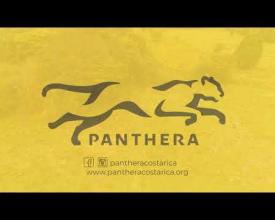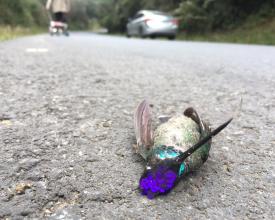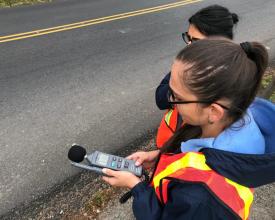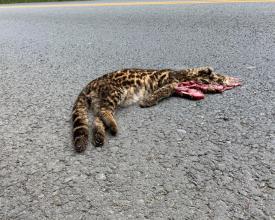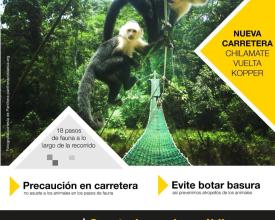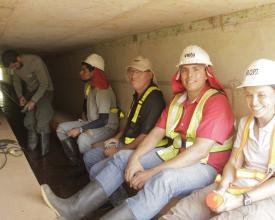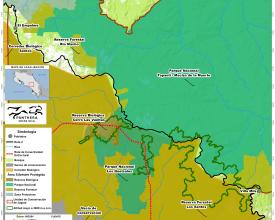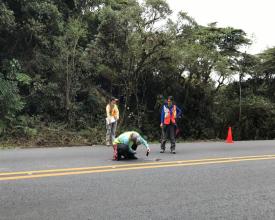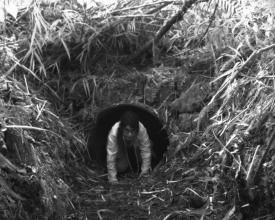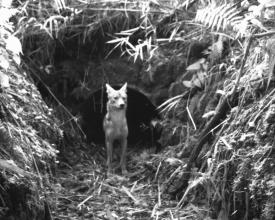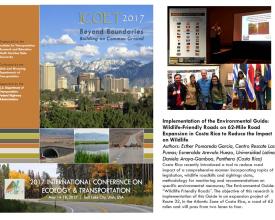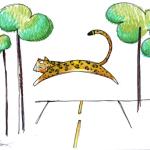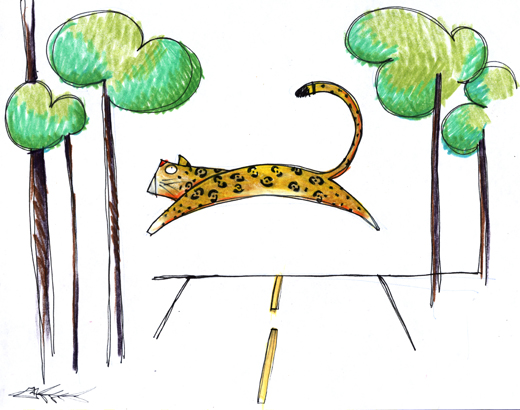
Finding evidence of 70 years of road impact on wildlife and a proposal of mitigation measures. Route 2: Interamericana Sur-Costa Rica
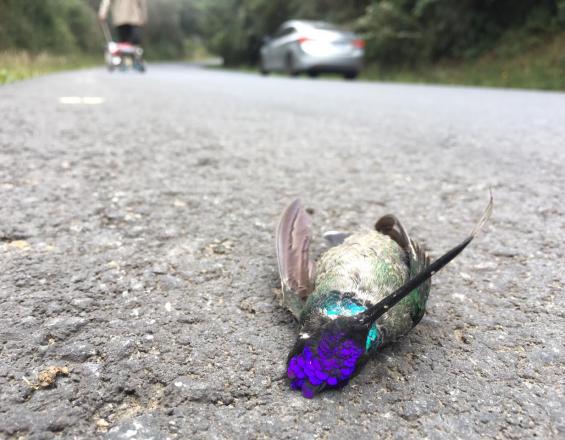
There is a need to generate strong evidence on the impact of roads on wildlife on biodiverse tropical regions to propose the implementation of mitigation measures. Mesoamerica is a biodiverse region and road expansion and improvement is on the rise. Tapirs, oncillas, an endemic rabbit and many other species have been documented being roadkilled on Route 2: Interamericana Sur in Costa Rica. Camera traps and road surveys will give us information about their distribution and how they are being affected by this road. This information will allow us to recommend mitigation measures (e.g., underpasses, fences, arboreal crossings) to decrease the possibility of being killed by cars and to ensure connectivity of their populations. The collection of these type of data on an existing road and the subsequent use of this information to request mitigation measures is a new landmark for the country and will be implemented through a collaborative effort between Panthera and several governmental entities.
Context
Challenges addressed
Mesoamerica is a biodiverse region and road expansion and improving is on the way. We lack of proper data on the Mesoamerican regions of the implications of the impact of roads on wildlife and specific mitigation measures. We need to display with solid research what is beneath for proper mitigation measures. Taipirs, oncillas, Dice's cottontail rabbit and many other species will be monitored. Camera traps and road surveys will give us information about their distribution and vulnerability towards roads. This information will guide us to recommend measures for them to cross safely and ensure connectivity for their populations and make this road safer for drivers. Wildlife data collection on an existing road and using this information to request mitigation measures is a new procedure for the country and will be implemented by an interdisciplinary team.
Location
Process
Summary of the process
One of the Buildlig blocks is a general guidance for the implementation of environmental measures on roads to reduce the impact on wildlife. The other building block is an effort to aproach the specific need of the implementation of mitigation measures for willife on existing roads, since 2020 .
Building Blocks
Mitigation measures on roads for wildlife and drivers safety
In biodiverse regions roads without mitigation measures for wildlife are causing ecosystem fragmentation. This problem is bigger if the road is between protected areas and when endangered species are dying due to vehicle collision. The effectiveness of the mitigation measures for wildlife is higher when they are implemented based on local wildlife data collection. Implementing mitigation measures like wildlife crossings can start restoring the ecosystem connectivity between protected areas in presence of a road. This measures also make the road safer for drivers, due to the reduction of car collisions with wildlife.
Enabling factors
1. Scientific study to determine road impact on wildlife and the mitigation measures required to reduce the impact;
2. Team work: Government (environment and transportation) and researchers;
3. Long-term management;
4. Legislation to support the implementation of measures;
5. Budget to implement the measures;
Lesson learned
A previus sensibilization work needs to be done to the government representatives. In Costa Rica we have 10 years working on the recommendation of mitigation measures on roads for wildlife. It is a long way, but when the mitigation measures are expensive you need a long-term management, to achieve solid results. Mitigation measures on new road projects are been implemented since 2015, but for existing roads we just found the way for its implementation, through a collaborative work, in 2020. This project is one of our fist attempts at a national level to activate the process of implementing measures on existing roads , through the maintaneiance activities.
Environmental Guide: Wildlife Friendly Roads
This guide is the tool used to collect wildlife data on roads to identify the impact and recommed measures for Costa Rica. It can be inpmenented on new road projects and for existing roads. Since 2015, this guide is used by Costa Rican Government to implement masures on new road projects. We started implementing it on exisitng roads since 2020.
Enabling factors
1. Government participation;
2. Funding for the data collection;
3. Legislation requesting measures to reduce development impact on wildlife;
4. Inclusion on the Environmental Impact Assesment;
5. Funding for the implementation of measures to prevent or reduce road impact;
Lesson learned
In many countries of Mesoamerican region, guidance is needed to reduce road impact. So this document can be adapted to local characteristics and to legislation of the country to start the implementaiton of measures on roads for wildlife;
Impacts
In 2019, in collaboration with representatives of the Ministry of Transportation, the Ministry of Environment and NGOs we found a procedure that the government could use to implement measures for wildlife on existing roads. We need to generate sound scientific information to make the proper recommendations on Route 2, where many wildlife has been roadkilled, including 30 tapirs in the last 10 years. We are working in collaboration with the representatives of the National Parks and Forest Reserves at the edges of the road, and the Ministry of Public Transportation local office, to activate the procedure on Route 2. At this point we have:- identified 60 drainages from 194 under Route 2 that can work as underpass for wildlife with retrofitting-identified the use of this dreinages by rabbits, weasel, racoons and squirrels -estimate of 4.000 wild animals dead on Route 2 due to vehicle collisions in a year -identified pecarries, tapirs, puma and oncillas on the surrounding protected areas -this year two tapirs and an oncilla have died due to vehicle collisions -consolidate a working group with representatives of the Government to consolidate the procedure to implement measures on this existing road, Route 2. This December a final report will be delivered to the Ministry of Environments for validation. They will proceed to request the implementation of the measures to the Ministry of Transportations.
Beneficiaries
Ecosystems of protected areas, local comunities, administratives and park Rangers sorrounding Route 2;
Drivers of Route 2;
Other existing routes where mitigation maeasures for wildlife are missingon the Mesoamerican Region;
Sustainable Development Goals
Story
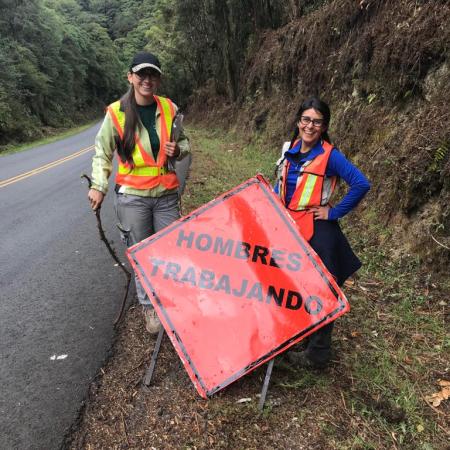
Safe roads for everyone
As one of the earliest transportation ecologists, I have worked with many other ecologists as this field of applied science has grown. Transportation ecology is a key field to mitigate impacts to habitat connectivity and wildlife movement from linear development. I have known Daniela Araya-Gamboa for about 8 years, and have watched and mentored her and her female colleagues as she has shown an admirable and innovative leadership in Costa Rica. Her latest project on Route 2: Interamerican Highway is one of her best efforts, because she has recognized and leaped on the opportunity to use an extremely rare if not possibly unique situation to not only mitigate the effects on that highway, but to also use it to further knowledge about how to mitigate the effects on other highways. While she is finding key information on how to mitigate unique effects on Central American species, her findings will be used globally to further a young field of science. I have reviewed and worked with with her the methodology of this project, and have been impressed with her approach and the importance of her early findings as well as the exciting possibilities of the remainder of the project. She has also creatively leveraged her limited resources with in kind support as well as her own limited time to gain useful results already in a short period of time. I heartily recommend supporting this project and Ms. Araya-Gamboa's leadership. ---Sandra L. Jacobson, retired Wildlife Biologist, US Forest Service, Pacific Southwest Research Station, Davis, CA.

